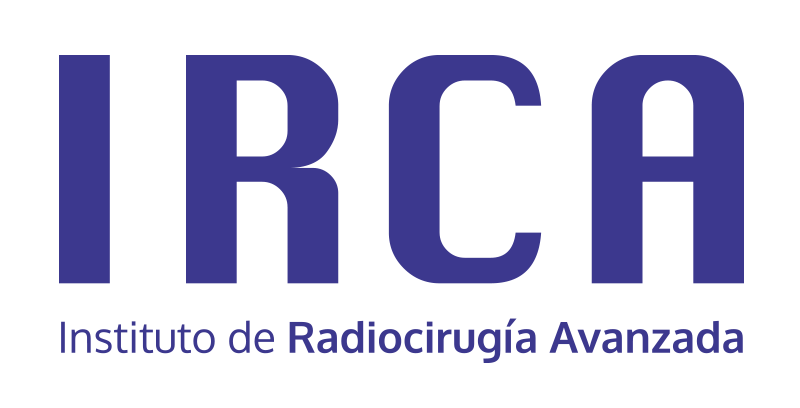The incidence of primary brain tumors in Spain accounts for 2% of cancers diagnosed in adults, according to data provided by the Spanish Society of Medical Oncology (SEOM).
On the other hand, it is estimated that 40% of patients diagnosed with another primary cancer will develop brain metastases.
In many cases, some of these tumors are located in places that are difficult to operate on or grow to a size that also makes them difficult to treat properly. In addition, it is important to discuss treatments, the side effects of which have been attempted to be reduced over the years with more effective and innovative techniques such as brain radiosurgery.
The goal is to reduce side effects, shorten the patient’s recovery time, and be as precise as possible in treating a tumor located in the brain. That is why today we will discuss what brain radiosurgery is, what it is used for, and the preparation and post-treatment process.
What is brain radiosurgery?
When we talk about brain radiosurgery, we are referring to a procedure that is very different from traditional ones. What is done here is to use radiation in a very precise manner to reach the tumor and damage its cells in order to prevent it from continuing to develop and spread. There are several types of this surgery, from stereotactic brain surgery to gamma knife surgery and hypofractionated stereotactic surgery, among others.
But what makes it different from traditional surgery? Let’s take a look.
- No incisions required: Unlike traditional surgery, brain radiosurgery does not require the patient to undergo any incisions or open surgery, such as a craniotomy with the patient awake.
- Damage to healthy tissue is minimized: although it may be thought that brain radiosurgery ends up damaging the healthy tissue surrounding the tumor, given the precision with which it is administered, damage is reduced.
- It is usually done only once: although there may be exceptions, it is usually done only once in a single session. This is also another advantage for the patient.
Although brain radiosurgery has many advantages, only ZAP-X is the most advanced stereotactic brain radiosurgery system. Unlike other existing technologies, in this case it is possible to control the radiation dynamics to ensure that the healthy structures surrounding the tumor remain intact after treatment. But what other advantages are there to choosing ZAP-X as a treatment option for a brain tumor?
- The patient can go home the same day: because ZAP-X does not require anesthesia and is performed on an outpatient basis, the patient can be accompanied by someone else. Therefore, the patient does not have to be admitted to the hospital.
- No enclosed space is required: other technologies for treating brain tumors do require shielded spaces, which can be overwhelming for patients and increase their discomfort during treatment, but this is not the case with ZAP-X.
What is brain radiosurgery used for?
Brain radiosurgery is used to treat all types of brain tumors, both malignant and benign. In the case of ZAP-X technology, some of the tumors for which it is particularly intended are as follows.
- Brain metastases: these are secondary brain tumors, as the origin of the cancer may be in the breast, colon, lung, etc. When we talk about metastasis, we are referring to the spread of cancer, which can also lead to the appearance of several tumors in the brain that are often difficult to treat. However, brain radiosurgery is an innovative and effective technique for treating this type of malignant lesion.
- Brain tumors: these are tumors that originate in the brain itself (primary brain tumors). Depending on their location, we can refer to gliomas, when they affect glial cells, or meningiomas, when the tumor is located in the membranes surrounding the brain, among other possibilities.
- Meningiomas: these are tumors that grow in the meninges and the pressure they exert on the nerves can cause changes in vision, headaches, memory loss, and even seizures. Most of these tumors are benign and grow slowly, so treatment with ZAP-X can be very effective in removing them.
- Acoustic neuroma: This tumor is also known as vestibular schwannoma and also grows quite slowly. However, when it grows, the pressure it exerts can cause anything from progressive hearing loss to very annoying ringing in the ear.
These are some of the brain tumors that can be treated with brain radiosurgery. Thanks to ZAP-X technology, it is possible to treat both benign and malignant lesions that have been diagnosed late. Due to the high precision of this advanced technology, always used in conjunction with systemic treatment, it is possible to treat a brain tumor or metastasis quickly and effectively.
Risks
Depending on the type of brain radiosurgery chosen, there may be some temporary side effects. For example, gamma knife radiosurgery can cause fatigue during the first few weeks, swelling in the areas where the radiation has been applied, and even increased sensitivity of the scalp.
Can this be prevented? Yes, as long as full control over the radiation dynamics can be exercised. With ZAP-X, this can be controlled and minimized to avoid damage to healthy brain structures and prevent this from negatively impacting the patient’s well-being after treatment.
How to prepare for treatment
Brain radiosurgery requires a series of preliminary tests to clearly identify the location of the lesion or lesions in the brain. Imaging techniques such as magnetic resonance imaging are essential for clearly seeing where the radiation should be directed to damage the tumor cells and reduce the size of the tumor so that it eventually disappears.
For some types of brain radiosurgery, it may be necessary to refrain from eating or drinking for a certain number of hours before the procedure, but this is not necessary with ZAP-X. In addition, the patient may be accompanied at all times, as there is no danger to anyone who wishes to be with the patient during the procedure.
It is important to remove any jewelry (such as earrings or piercings) and glasses, if worn, during the procedure. The experts at our Institute of Advanced Radiosurgery (IRCA) will provide personalized information on other essential matters to prepare for treatment. They will also answer any questions or concerns the patient may have before the procedure.
Patients often wonder whether brain radiosurgery is painful or whether they will feel any discomfort during the procedure. This fear is completely normal, and the answer we always give at IRCA is that the patient will not feel anything. They will simply have to remain still for the time necessary to treat the tumor, but they will not feel any pain. This treatment is painless.
What is the post-treatment like?
Choosing ZAP-X technology as an option for brain radiosurgery means, as we mentioned earlier, undergoing this procedure on an outpatient basis. Therefore, after the procedure, you can return to your daily life without any problems. Because there are no incisions or cuts, the patient does not have to stay in the hospital or under observation. This is a major advantage of this advanced technology.
When diagnosed with a brain tumor, many people often feel hopeless. This feeling is heightened if the diagnosis is brain metastasis. However, at IRCA, we want to make it clear that technology has advanced greatly and that more substantial improvements are being made all the time. Not only to minimize the side effects of treatments, but also to be able to treat malignant lesions or those that have not been identified in time. Thanks to the advanced technology we currently have at our disposal, it is possible to treat benign and malignant lesions in the brain, head, and neck, ensuring the well-being of the patient at all times, which is undoubtedly the most important thing.

